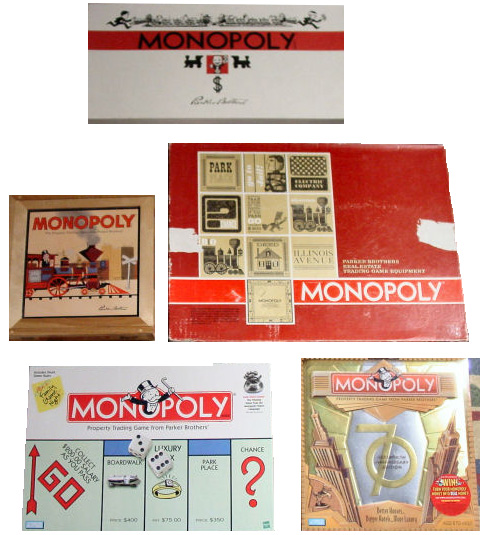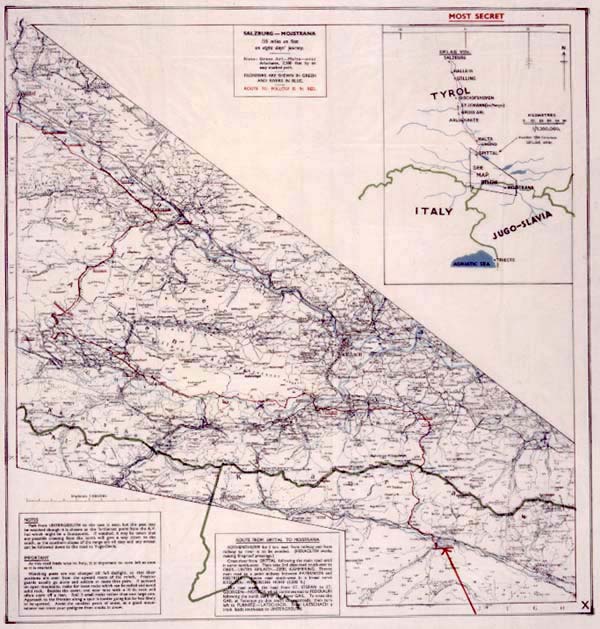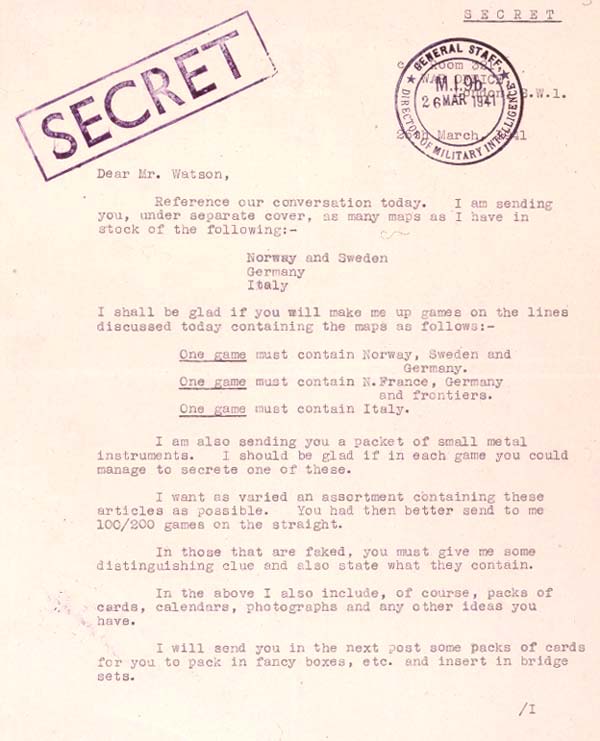The board game, Monopoly, has a checkered history. It was created by a Quaker whose intent was to illustrate the negative aspects of land ownership monopolies, it was banned by the Communists as an overt symbol of capitalism, it has become the most popular board game of all time–and it was once used by the British secret service, via the International Red Cross, as a means of smuggling maps, money, and even compasses to World War II prisoners of war in Germany.
By 1941, there were thousands of Allied prisoners of war in Germany, and they were under orders to escape, “if possible.” It’s estimated that, by the end of the war, more than 35,000 Allied POWs did escape from German prison camps. While there’s no record to prove it, more than a few of those escapees certainly owe their breakout to the classic board game of Monopoly.
It’s all about maps. “During WWII hundreds of thousands of maps were produced by the British on thin cloth and tissue paper. The idea was that a serviceman captured or shot down behind enemy lines should have a map to help him find his way to safety if he escaped or, better still, evade capture in the first place. A map like this could be concealed in a small place (a cigarette packet or the hollow heel of a flying boot), did not rustle suspiciously if the captive was searched and, in the case of maps on cloth or mulberry leaf paper, could survive wear and tear and even immersion in water. The scheme was soon extended to cover those who had already been captured, although a certain amount of ingenuity was required to get the maps into the POW camps” (cited below).
This is where Monopoly comes into play. Maps made of paper, cloth, tissue, and mulberry leaf simply didn’t work. If they weren’t confiscated, they deteriorated or had no bearing on a POW’s location. To cut this Gordian knot, MI9, the British branch of the Secret Service responsible for escape and evasion, sought out the services of John Waddington, Ltd., the only firm in Britain that had perfected the technology of printing on silk, and, it just so happened, the only firm in Britain to have a license to produce the American game of Monopoly. Serendipity.
Allied prisoners of war were allowed to receive parcels from their families and relief organizations such as the Red Cross. While personal parcels were screened thoroughly, parcels from the Red Cross and other charitable institutions underwent less scrupulous vetting. Ironically, German prison officials considered gift items such as card and board games to be a healthy diversion to POW boredom and possible preoccupation with ideas about escape. Under the aegis of MI9, a special branch of Waddington began producing escape maps, printed on silk, keyed to every region where Allied POW were located, and folded into such tiny parcels that they actually fit inside a Monopoly playing piece. They even contrived to incorporate a playing token which contained a small magnetic compass, a metal file, and genuine European currency into the Monopoly packages.
Thousands of these rigged Monopoly sets were sent to POWs, and it’s claimed that one-third of all WWII Allied escapees were aided in their flight by the maps and materials provided. All of them were supposedly sworn to secrecy, but actual details were declassified in 2007 when the surviving craftsmen from Waddington’s, as well as the firm itself, were finally honored in a public ceremony. For a definitive article on this fascinating subject, check out Escape Maps of the World by Debby Hall, a cataloger in the British Library’s Map Library.
Article by Bill Norrington





